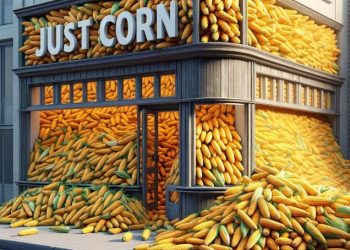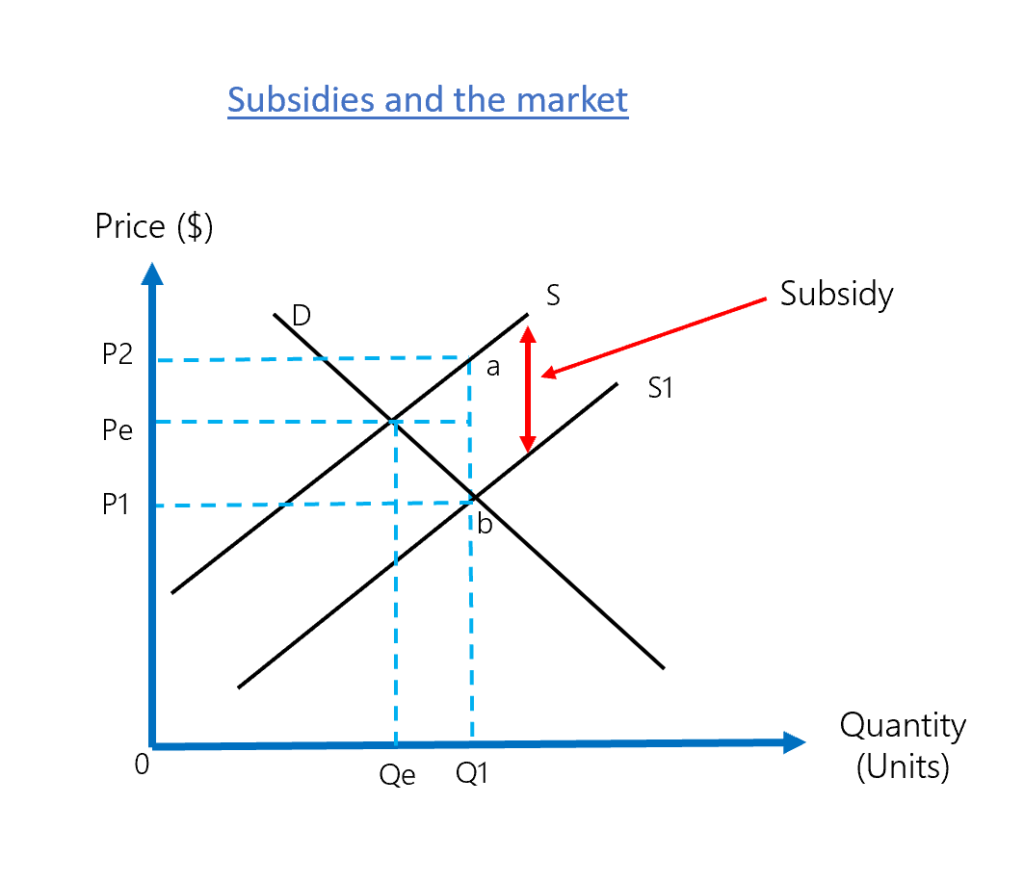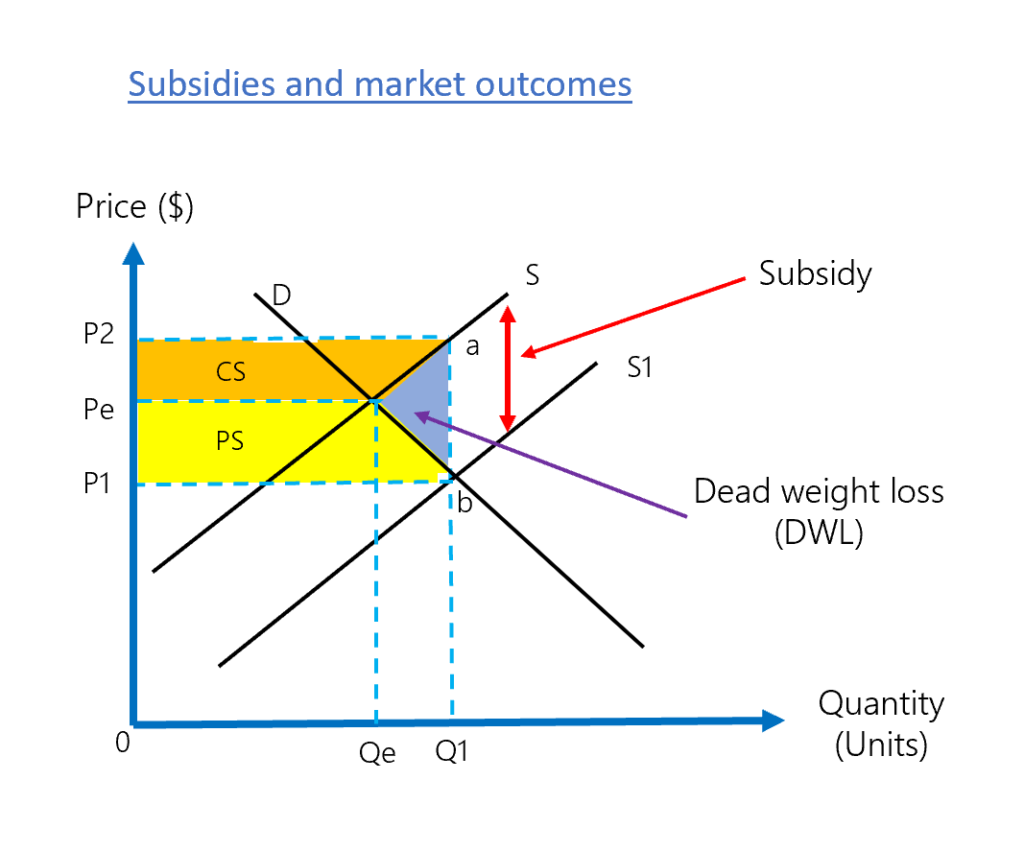IB Macreconomics
Which is the most useful in supporting agricultural production, a subsidy or a price floor? [15]
Both subsidies and price floors aim to increase quantity provided to the market and enhance social surplus (the sum of both consumer and producer surplus) labelled as yellow and orange, respectively below.
Both subsidies and price floors are methods of government intervention, aimed to solve an issue in the market (often undersupply). In agricultural markets, potential under-supply is unwanted because of the essential value of having adequate food to feed a population.
Moreover, a scarcity of food poses a strategic liability as one country has to trade with another, which presents problems!
Firstly, what if the other country doesn’t want to trade?
Secondly, what if the other countries prices rise?
Thirdly, what happens to the domestic balance of payments account with too great a quantity of imports?
Social surplus

What a surplus looks like!!!

Price floor
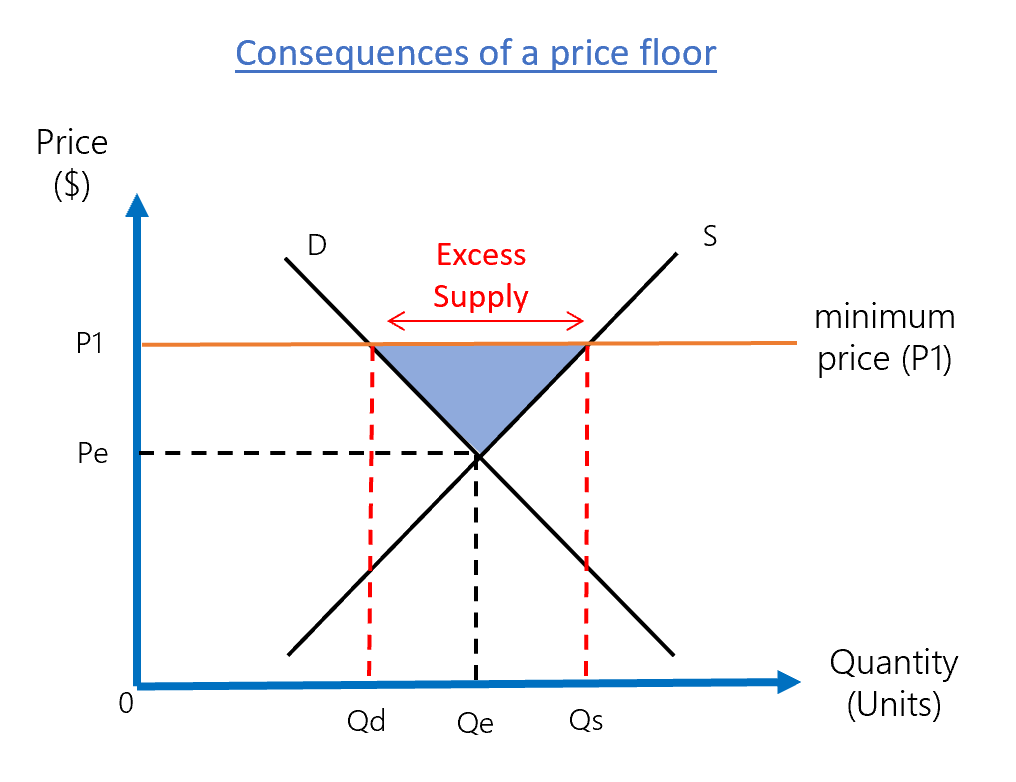
Price floors lead to a decrease in the quantity demanded, but conversely, an increase in the quantity supplied to the market!
Price floor effects
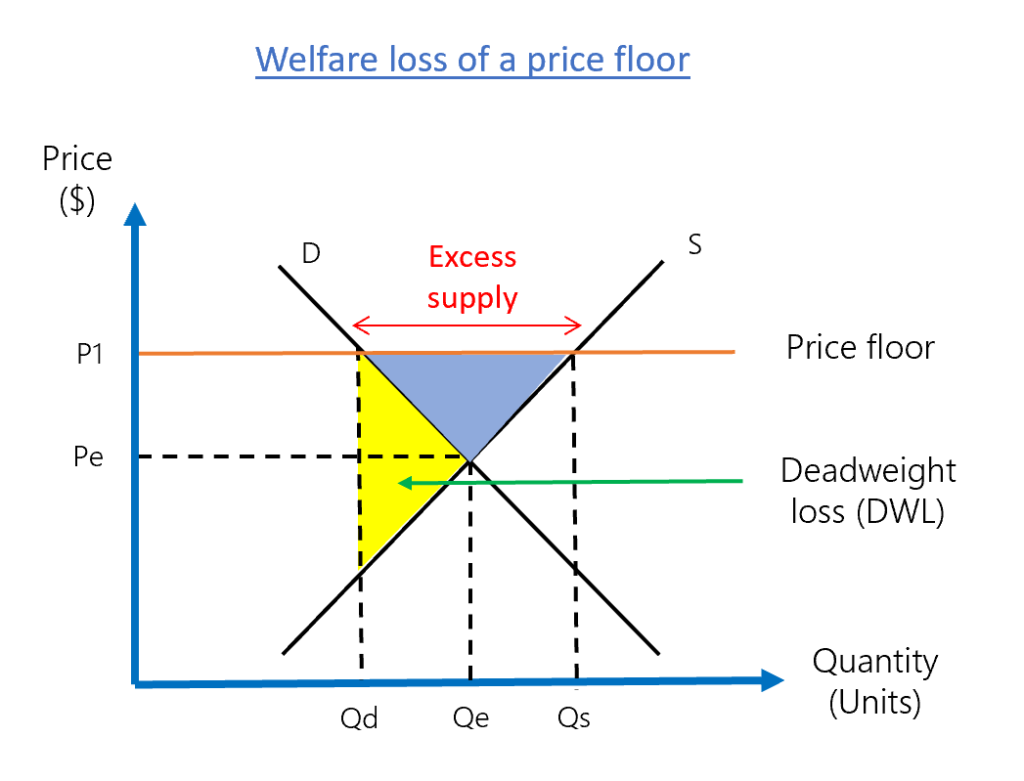
The contraction in demand results in a fall of quantity from Qe to Qd. Supply increases and creates an excess supply and resulting deadweight loss (DWL) beetween Qe and Qd
Benefits of a subsidy

- Help vital sectors that are crucial for national security or economic stability, such as agriculture, energy, and manufacturing.
- By reducing the cost of production for goods and services, subsidies can lead to lower prices for consumers.
- Governments can use subsidies to promote activities that have positive externalities.
- May rescue / save an industry during sustained recession.
- Subsidies can encourage R&D.
- Subsidies can help domestic companies compete against foreign imports.
- Protect local jobs!
- Targeted subsidies can help reduce economic disparities by making essential services more affordable.
- Governments can use subsidies to promote regional development in struggling regions.
- Subsidies for renewable energy and energy-efficient technologies can accelerate the shift towards a more sustainable and less carbon-intensive economy.
Benefits of a price floor

- Price floors help ensure that producers, such as farmers or small manufacturers, receive a minimum income for their products or services.
- By preventing prices from falling below a certain level, price floors can help stabilize markets and reduce the uncertainty faced by producers and investors.
- In the absence of a price floor, excessively low prices can lead to a market collapse.
- When producers are assured of a minimum price for their goods, they might be more inclined to invest in quality improvements.
- Price floors can help distribute income more equitably.
- Protect smaller firms against predatory pricing from larger firms with market power!
- In times of economic downturn, price floors can provide a safety net for producers.
How to compare a subsidy versus a price floor?
How can they be compared in terms of usefulness?
Firstly, a subsidy shifts supply downwards, increasing quantity supplied and reducing price. By contrast, a price floor raises price and reduces supply!
Both methods of intervention can be useful, but subsidy achieves the desired result with the least welfare loss to the consumer and producer!
The price floor could be said to ‘hurt’ the consumer to a greater extent because the price is artificially raised, which creates significant market distortion, whereas a subsidy is beneficial to both producer and consumer! The obvious mitigating drawback of the subsidy is that, it has to be paid for ultimately by the tax payer!
Real world examples (Brazil and India)
Brazil and Subsidies

Let us consider the case of Brazil for the effectiveness of subsidies and the case of India for the less effective use of price floors.
Brazil: Effectiveness of Subsidies In Brazil, agricultural subsidies have been an effective policy tool in increasing agricultural output. The government has provided financial assistance in various forms, such as low-interest credit lines, insurance, and direct payments to support farmers, particularly in the soybean and sugar sectors. These subsidies have allowed farmers to invest in modern agricultural technologies, improve infrastructure, and adopt better farming practices, leading to significant increases in productivity and output. As a result, Brazil has become a major exporter of various agricultural commodities. These subsidies have not only contributed to the country’s GDP growth but also to global food security.
India and price floors

Let us consider the case of India for less effective use of price floors India employs price floors, known as Minimum Support Prices (MSP), for certain crops to protect farmers from volatile market prices.
India: However, the effectiveness of MSPs in India has been mixed. While MSPs are intended to assure farmers a minimum profit and incentivize production, they have often led to overproduction of certain crops like wheat and rice, regardless of market demand or environmental suitability.
This has led to significant government stockpiles of these grains, distortions in cropping patterns, and underutilization of water resources. Additionally, the MSP system has been less effective in reaching all farmers due to issues with procurement and distribution, leaving many small-scale farmers outside the MSP system, who still struggle with price volatility.
Brazil versus India conclusion
In summary, Brazil’s agricultural subsidies have directly contributed to the expansion of its agricultural sector by enabling farmers to increase their productivity. In contrast, India’s price floors have provided some level of income stability.

